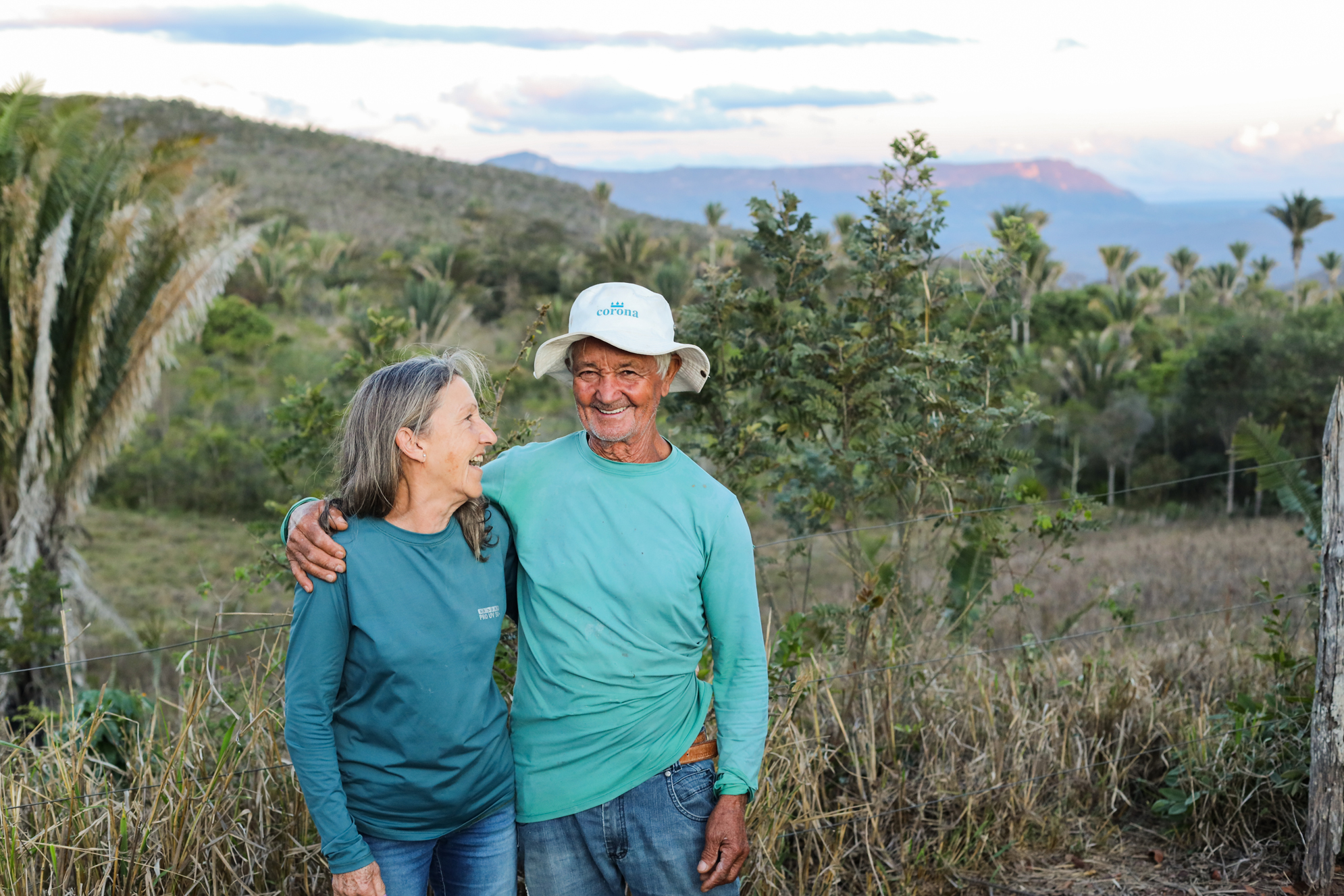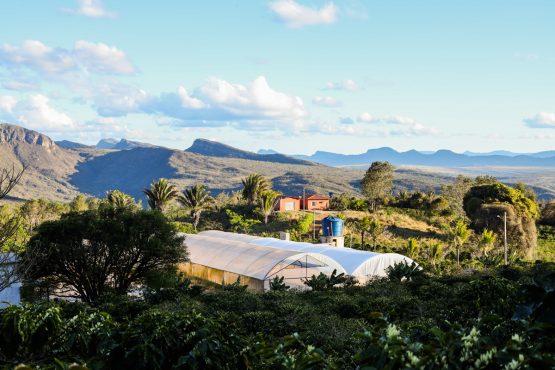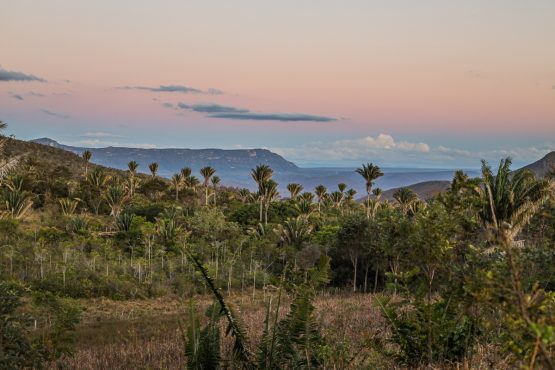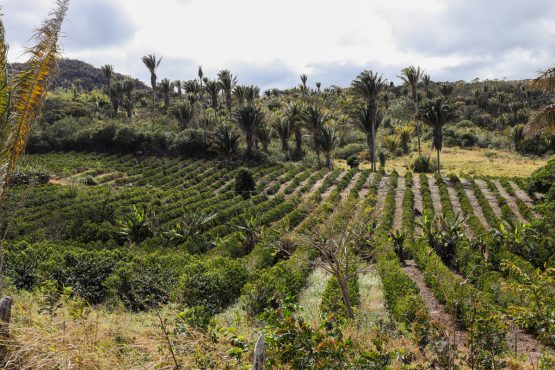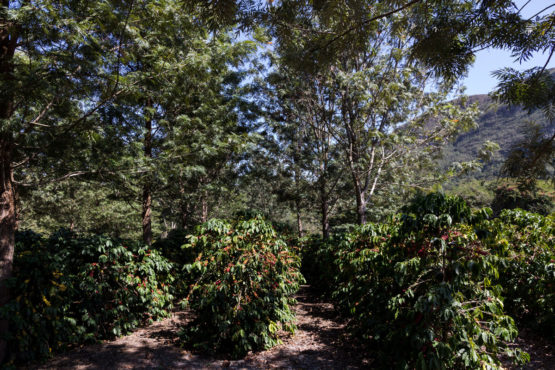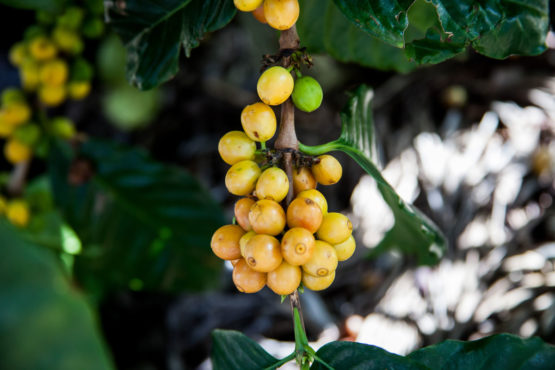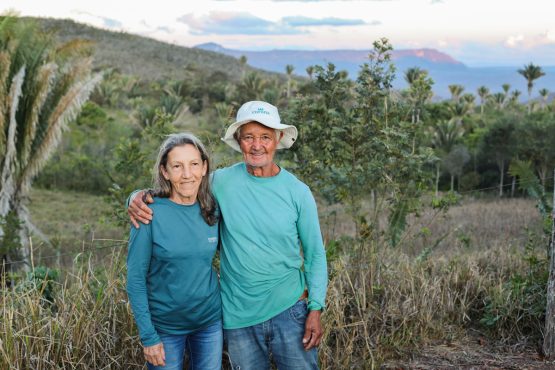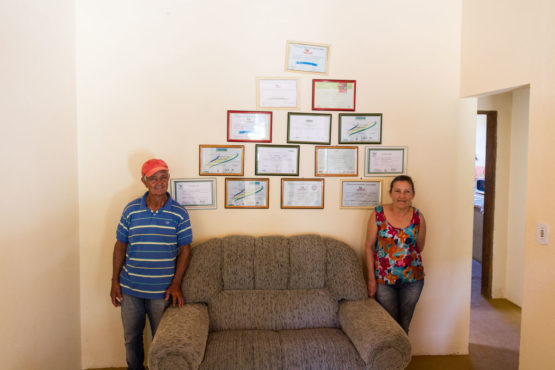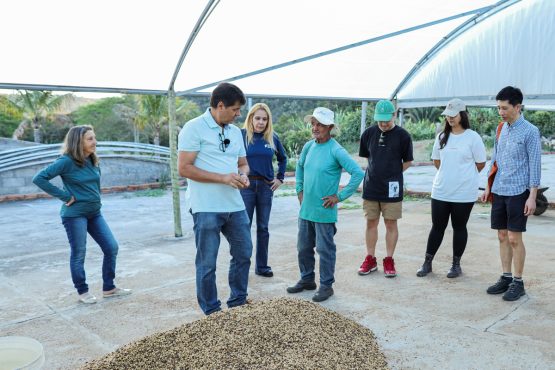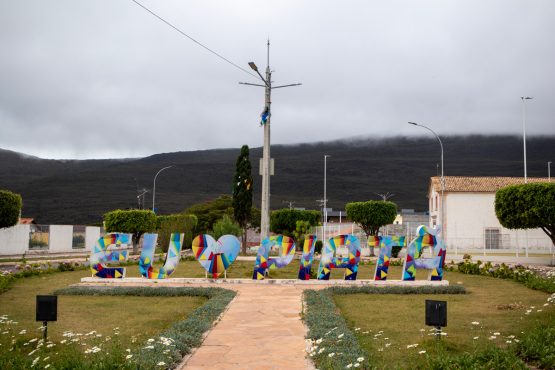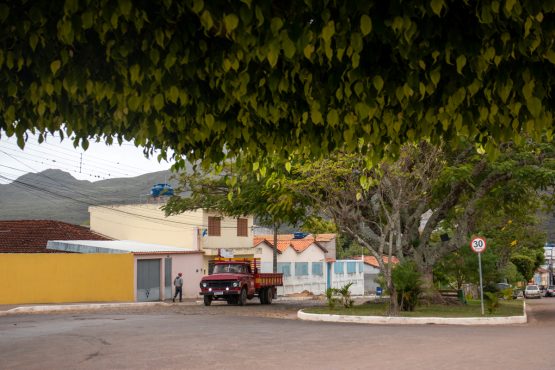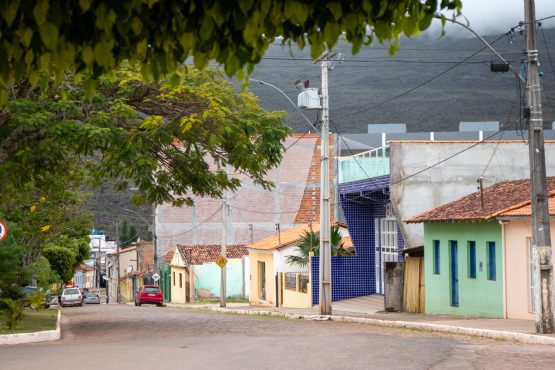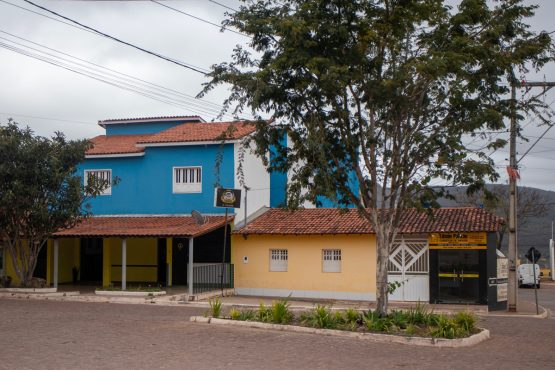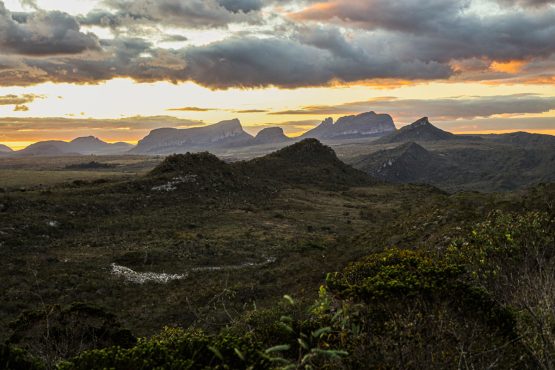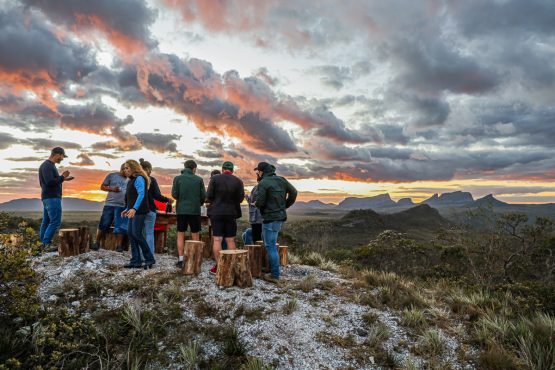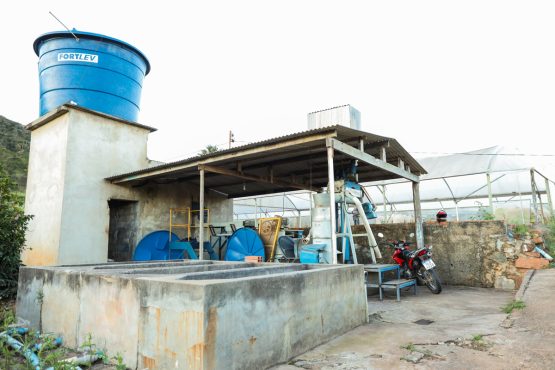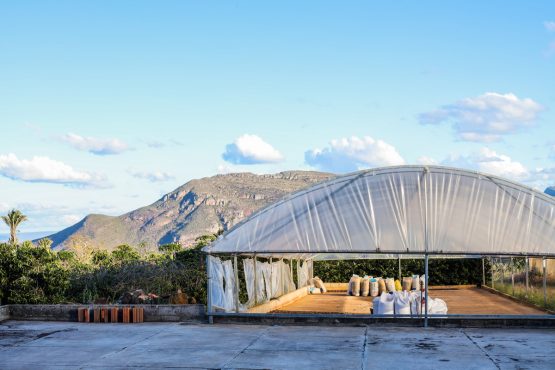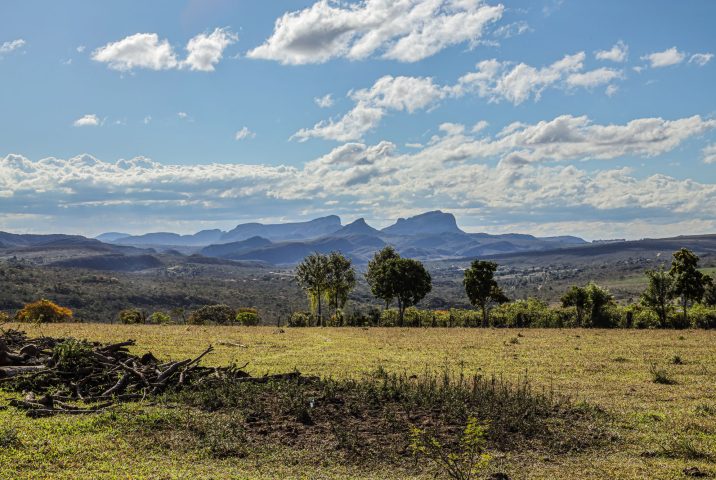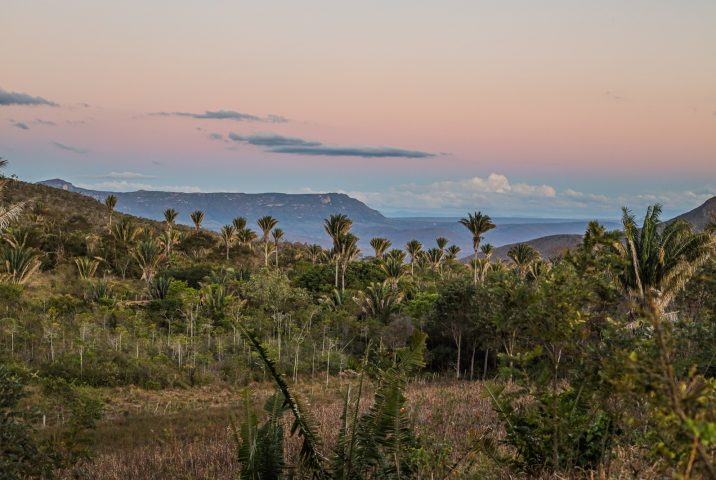Cafundó
Creamy and sweet, with great structure and balance. Dried apricot, caramel and hazelnut nougat.
Cafundó is a very small coffee farm located in Piatã, in Bahia’s Diamantina Plateau region. Chapada Diamantina translates to ”Diamond Plateau” in Portuguese, and for 100 years, this area was mined for the gemstones embedded in its cliffs. Today the region is famous for its specialty coffee.
The land on which Cafundó sits was acquired by Pedro Santana from a friend in 1989. Pedro, who was based in bustling São Paulo for many years, purchased the land in the pursuit of a slower and simpler lifestyle with his family. He was a banker at the time, stressed and working long hours with little reward. Originally from Piatã, Pedro decided to invest in coffee cultivation, taking advantage of the farm’s high elevation (1,360 metres above sea level) and exceptional conditions for growing coffee. He named his farm after the microregion where it is located, cafundó (which translates to ‘very very far away’ in Portuguese), because it is both physically and mentally far removed from the hustle and bustle of São Paulo.
Cafundó extends over 28 hectares, of which five are under coffee. A mix of varieties are planted – around 50% of the trees are Red Catuaí, 30% Yellow Bourbon and 20% Red Catucaí. Coffee grows here under the shade of Gravellia trees on the plantation. The shade, along with the farm’s high elevation, results in the beans maturing slowly, giving time for concentrated sugars to develop and resulting in a very sweet and complex cup.
Over time Pedro, with the help of Silvio Leite and neighbouring producer Antonio Rigno (who owns Sao Judas Tadeu), began to focus on specialty coffee. In 1999 he won the Best of Bahia competition and in 2006 the farm was recognised in the Cup of Excellence for the first time. He is supported by his wife, Delzute Araujo Mesquita, who works by his side on the farm, and together the pair have won many accolades and recognition for their high-quality coffee. You can read a short interview with Pedro here.
ABOUT PIATÃ
Located at the foot of the Chapada Diamantina mountain range, Piatã is a unique growing region in Brazil’s Bahia state. The coffees produced here tend to be floral, sweet and complex, and noticeably distinct from those grown elsewhere in Brazil. There are two main factors behind this: coffee grows at elevations of up to 1,400 meters above sea level, which is high for the country; and temperatures range from about 2°C to 18°C in winter, some of the lowest in Brazil. Combined, the high elevation and cool climate are key in slowing down the maturation of the coffee cherries, leading to an increased concentration of sugars in the bean. The result is a cup profile that is bright, transparent, and distinctive. Piatã’s relative proximity to the Equator line ensures the region’s coffee trees can experience such drastic conditions without being affected by frost, unlike other, more traditional coffee-growing regions in the country.
Piatã’s exceptional natural characteristics also contribute greatly to the coffees’ profile. In the distant past, the whole of Chapada Diamantina was completely under water, slowly eroding over millions of years — leaving behind soil that is nutrient-rich and slightly soft. This soil, along with the above-average local humidity, is home to a healthy and diverse ecosystem that includes some 1,600 individual plant species. While the highlands of Chapada are rugged and dry, the area surrounding Piatã is filled with streams, waterfalls and even swamps that, in most years, provide plenty of water for irrigation and agriculture.
While coffee production is on the rise in Piatã, it is still very much a developing industry. Locally produced lots didn’t gain recognition for quality among Brazilian buyers until the 1990s. This recognition led to the establishing of the ASCAMP growers’ association in 1998, which was tasked with assisting growers who had land, but few resources. Over the next decade, cooperatives and other farmer groups were founded, playing a pivotal role in elevating the coffees grown and processed in the region. Piatã went on to be internationally recognised for its high quality in 2009, when five of the top 10 spots in Brazil’s Cup of Excellence came from this small corner of Bahia. The region’s dominance in the competition has continued every year since, particularly in 2016 when an astounding 19 of the 24 winning lots came from Piatã, and again in 2022, when 10 local winners were recognised! MCM has been sourcing coffee from this region since 2012, thanks to the support of longtime partner and coffee mentor Silvio Leite. Head here for more on Silvio and the incredible work he’s done in Brazil.
Part of what makes the Piatã region so special is that production is extremely limited, given the scale of the local estates. Farm sizes tend to be relatively small when compared to other producing areas in Brazil, usually just ten hectares or less in size, and are not visible when driving through the outskirts of town (unlike somewhere like Cerrado de Minas in Minas Gerais, where large estates make up most of the landscape). Most growers process their own cherry on site, sticking to traditional methods with little focus on experimentation, with the goal of processing coffee well and ensuring the final cup is sweet and clean. As many producers rely on coffee as their main source of income, simplicity and repeatability are prioritised. Great attention to detail is placed on the post-harvest work, as the region’s cooler temperatures and high humidity pose risks to the drying parchment. To prevent any potential defects in the cup, many local producers have built greenhouses and raised beds, to add a layer of protection without minimising the necessary ventilation for coffee to dry evenly and at a steady rate.
The region of Piatã is the traditional home of the Cariri and Maracá indigenous people, who were defeated during the Portuguese invasion of Brazil in the seventeenth century. While most of the remaining Cariri people were displaced to other regions within the state of Bahia, eventually joining other indigenous communities, the Maracás have a nearby municipality located at their historical capital city, named in their honour. The word “piatã” translates to “hard foot or fortress” in the indigenous Tupi language (which was spoken by most First Nations People along Brazil’s coast). Head here to learn more about beautiful Piatã.
HOW THIS COFFEE WAS PROCESSED
Coffee cherries at Cafundó were picked selectively by a small team of women (called ”panhadeiras de cafe”), who are extremely disciplined and ensure only the very best cherries are selected. The coffee was then processed onsite at the farm, using the pulped natural method, through which Pedro aimed to try and preserve the coffee’s inherent and best properties.
This lot was processed using the pulped natural process. After pulping, the coffee was sun-dried on pristine patios with some of its mucilage still attached. The parchment was spread in layers of about four centimetres and raked several times a day to ensure the coffee dried evenly. Finally, the the coffee was separated into numbered lots which were stored and rested in parchment in a purpose-built warehouse, and then cupped for quality control prior to export.
